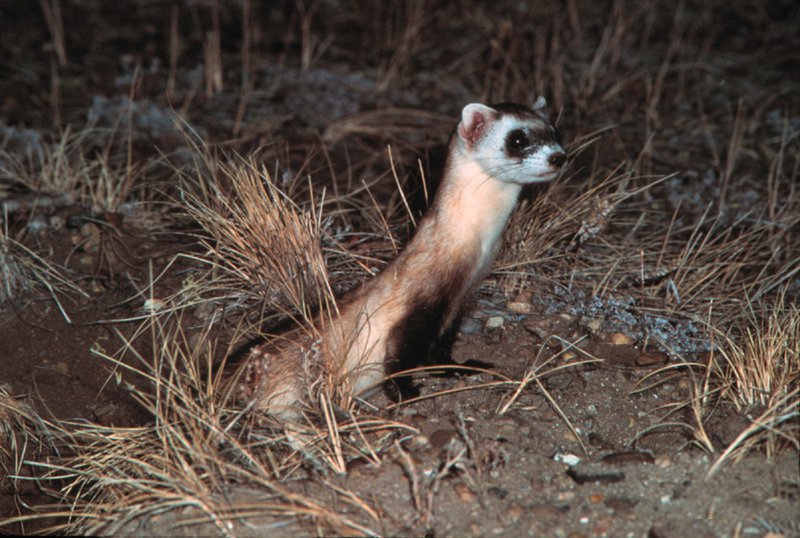For Immediate Release, June 24, 2021
|
Contact: |
Michael Robinson, (575) 313-7017, michaelr@biologicaldiversity.org |
Endangered Black-Footed Ferrets Proposed for Reintroduction Throughout Arizona
40-Million-Acre Range Expansion Would Also Include New Mexico, Utah
FLAGSTAFF, Ariz.— The U.S. Fish and Wildlife Service proposed today to reintroduce endangered black-footed ferrets to four new areas in Arizona once their prey, prairie dogs, have increased sufficiently in numbers. A fifth area’s prairie dog population needs more growth and would be considered for ferret reintroduction later.
“Black-footed ferrets are not just exceedingly cute, they also play a fascinating evolutionary role as specialized predators of prairie dogs,” said Michael Robinson at the Center for Biological Diversity. “Returning these animals to a much wider area represents a welcome commitment to increase the numbers and distribution of prairie dogs and start healing our much-abused arid grasslands.”
A small population of black-footed ferrets was first reintroduced to northern Arizona in the 1990s. Today’s proposal could increase the eventual range of the ferrets to more than 40 million acres of potential habitat elsewhere in northern Arizona, along with eastern and southeastern Arizona, northwestern New Mexico and southeastern Utah.
The first four potential reintroduction sites would be in the Williams and Tusayan ranger districts of the Kaibab National Forest, the CO Bar Ranch, Petrified Forest National Park and near a reservoir called Lyman Lake. A fifth area, on Las Cienegas National Conservation Area, supports a reintroduced prairie dog population that must still grow substantially before it could support ferrets.
The federal proposal would also facilitate reintroduction to sovereign Tribal lands of the Hopi Tribe, Hualapai Tribe and the Navajo Nation, if any of these entities decide to reintroduce ferrets. The Navajo Nation is the largest Indian reservation in the United States and comprises more than 17.5 million acres in Arizona, New Mexico and Utah.
“Forty years ago just 18 individual black-footed ferrets survived,” said Robinson. “Thanks to the Endangered Species Act, hardworking biologists, and a forward-thinking Biden administration, we can now begin to envision the ferrets sufficiently recovered to never again teeter on the brink of extinction.”
Background
Ferrets are members of the mustelid family, which includes otters, weasels and skunks. Black-footed ferrets evolved to prey on prairie dogs and nearly went extinct in part because of a federal program to systematically poison prairie dogs on behalf of the livestock industry beginning a century ago.
In 1981, two years after the black-footed ferret was believed to have gone extinct, a small population was discovered in Wyoming. When that population became threatened by introduced sylvatic plague, the last 18 ferrets were captured alive. Fifteen of them, representing the genetic equivalent of seven distinct founders, were used to start a captive population that has been used for reintroduction in several western states.
Recovery of the black-footed ferret has been hindered by continued persecution of prairie dogs, which suppress their numbers and limit their distribution, as well as by recurring outbreaks of plague.


The Center for Biological Diversity is a national, nonprofit conservation organization with more than 1.7 million members and online activists dedicated to the protection of endangered species and wild places.

